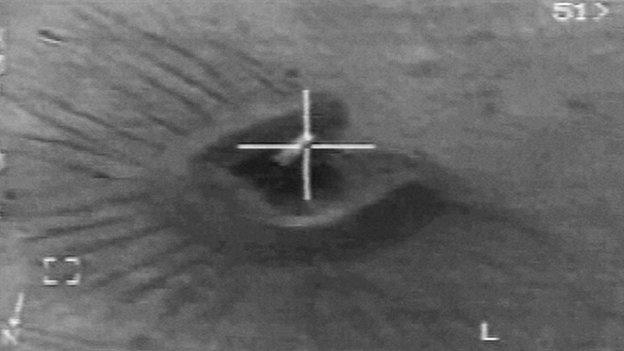Obituary: Yemen al-Qaeda leader Nasser al-Wuhayshi
- Published
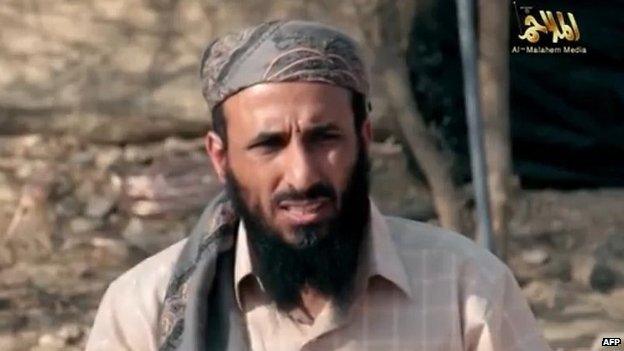
Nasser al-Wuhayshi warned in 2014 that AQAP would fight Western "Crusaders" everywhere
Nasser Abdul Karim al-Wuhayshi, a former private secretary to Osama Bin Laden, was the leader of al-Qaeda in the Arabian Peninsula (AQAP), formed in 2009 in a merger between two offshoots of al-Qaeda in Saudi Arabia and Yemen.
Under his direction, AQAP took advantage of the weak central government in Yemen to establish strongholds in tribal regions and become what US counter-terrorism officials described as the "most active operational franchise" of al-Qaeda beyond Pakistan and Afghanistan.
The group claimed responsibility for a number of high-profile attacks in Yemen and Saudi Arabia, as well as a failed attempt to blow up a US passenger jet.
In August 2013, it was reported that Wuhayshi had been named al-Qaeda's "general manager", or second-in-command, showing his importance to the jihadist network's efforts to attack the West and suggesting he might be in line to succeed Ayman al-Zawahiri as overall leader.
But in June 2015, AQAP announced that Wuhayshi had been killed in a suspected US drone strike in the south-eastern port city of Mukalla.
Prison escape
Wuhayshi, who is from the southern Yemeni governorate of al-Baida, spent time in religious institutions before travelling to Afghanistan in the late 1990s.
He fought at the battle of Tora Bora in 2001, before escaping over the border into Iran, where he was eventually arrested. He was extradited to Yemen in 2003.

Al-Qaeda in Yemen was behind the deadly attack on the US embassy in Sanaa in 2008
In 2006, Wuhayshi and 22 other suspected al-Qaeda members managed to escape from a prison in Sanaa. Among them were also Jamal al-Badawi, the alleged mastermind of the USS Cole bombing, and Qasim al-Raymi, AQAP's military commander.
After their escape from prison, Wuhayshi and Raymi were said to have overseen the formation of al-Qaeda in Yemen, which took in both new recruits and Arab fighters returning from Iraq and Afghanistan.
The group claimed responsibility for two suicide bomb attacks that killed six Western tourists before being linked to the assault on the US embassy in Sanaa in 2008, in which 10 Yemeni guards and four civilians died.
Four months later, Wuhayshi announced in a video the merger of the al-Qaeda offshoots in Yemen and Saudi Arabia to form "al-Qaeda of Jihad Organisation in the Arabian Peninsula". His appointment as AQAP leader was later confirmed by Zawahiri.
Western targets
AQAP's first operation outside Yemen was carried out in Saudi Arabia in August 2009 against the kingdom's security chief, Prince Mohammed bin Nayef, though he survived.
It later said it was behind the attempt to blow up a US passenger jet as it flew into Detroit on 25 December 2009. The Nigerian man who was convicted in relation with the incident, Umar Farouk Abdulmutallab, said AQAP operatives had trained him.
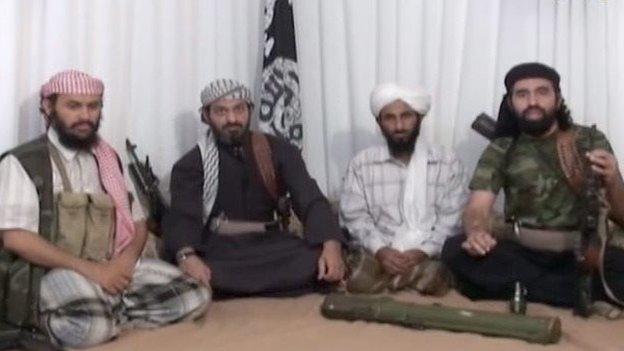
In 2009, Wuhayshi announced the merger of al-Qaeda offshoots in Yemen and Saudi Arabia
Two more plots targeting US aviation were foiled.
At home, Wuhayshi's group capitalised on political turmoil in Yemen resulting from the uprising against President Ali Abdullah Saleh in 2011 to capture a string of towns and villages, only to be driven out of many areas in an army offensive in 2012 ordered by Mr Saleh's successor, Abdrabbuh Mansour Hadi.
At the same time, US President Barack Obama authorised a significant increase in the number of drone strikes targeting AQAP operatives in Yemen in 2012, resulting in the deaths of a number of senior figures, including Wuhayshi's Saudi-born deputy, Said al-Shihri.
The territorial losses did not, however, stop AQAP from launching a series of high-profile attacks targeting Yemeni security forces and government personnel. This included a suicide bombing at a military parade in Sanaa in May 2012 that killed more than 120 people and a raid on a hospital in the defence ministry compound in the capital in December 2013 that left 56 people dead.
Yemen chaos
In March 2014, Wuhayshi was filmed telling a large gathering of militants that AQAP would fight Western "Crusaders" and their allies everywhere.
That December, the group threatened to kill an American hostage, Luke Somers, if its unspecified demands were not met within three days. Somers was killed during a failed rescue attempt by US special forces.
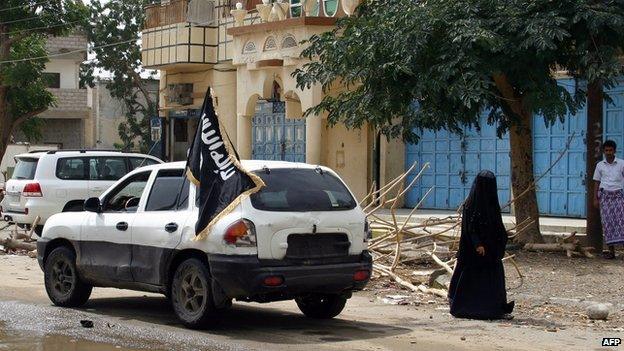
AQAP and its allies have capitalised on the instability that has plagued Yemen since 2011
The next month, AQAP claimed to be behind the deadly attack on the Paris offices of the French satirical magazine, Charlie Hebdo, which had published caricatures of the Prophet Muhammad. US officials later confirmed that one of the gunmen had received training at an AQAP camp.
In Yemen, AQAP has recently capitalised on the chaos caused by a rebellion by the Houthi movement and a Saudi-led air campaign to weaken the Zaidi Shia group, expanding the territory it controlled in the south and east of the country.
However, the US drone strikes targeting AQAP did not stop and one was reported to have killed Wuhayshi as he met two fellow militants in Mukalla on 9 June.
On 16 June, an AQAP spokesman confirmed Wuhayshi's death and vowed that "the blood of these pioneers makes us more determined to sacrifice".
- Published9 April 2015
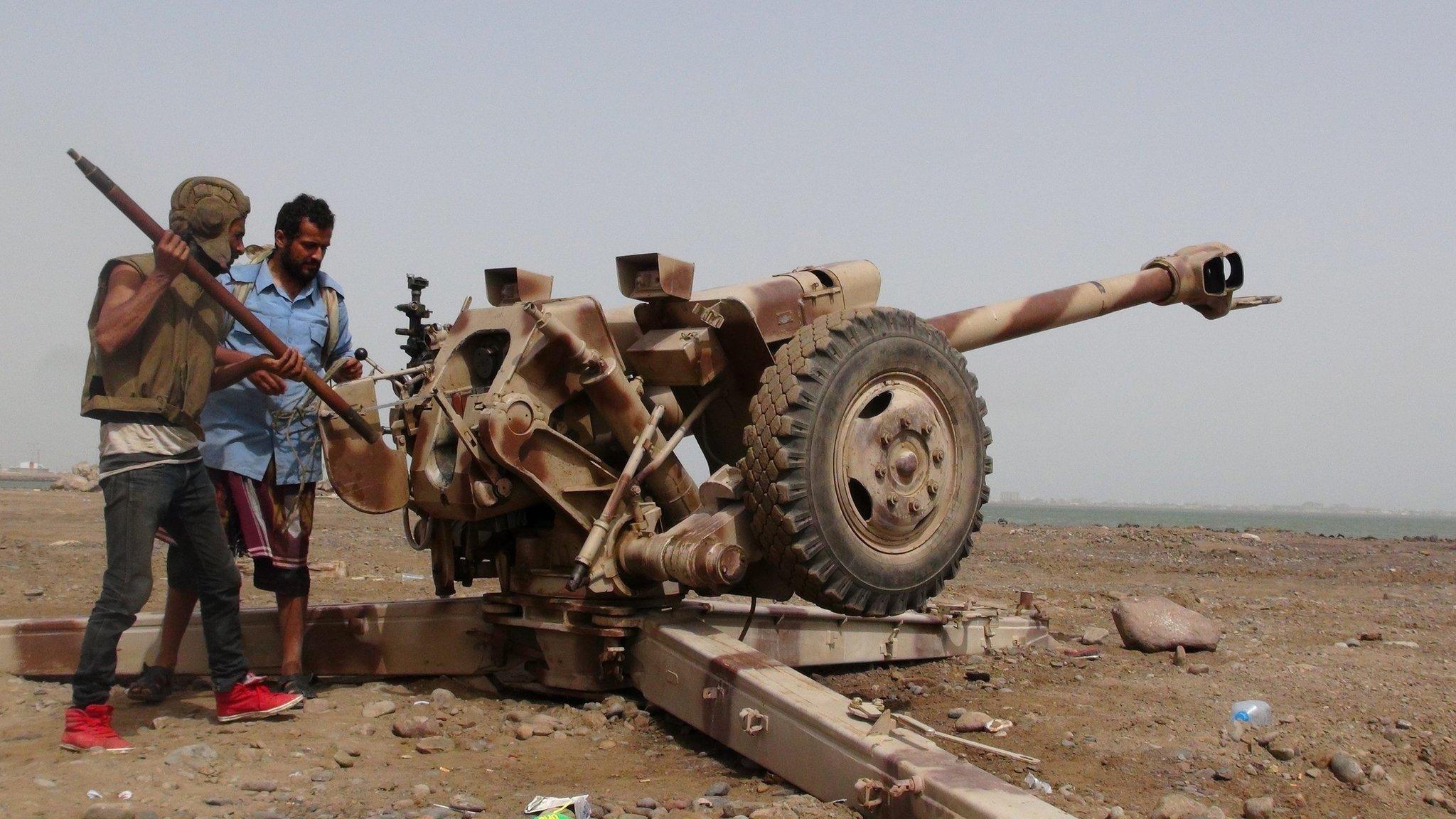
- Published16 June 2015
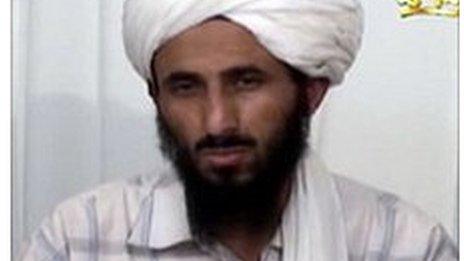
- Published15 June 2015
